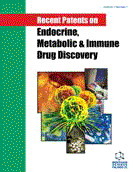Abstract
Many are the diseases which course with free radical formation. These disorders cover a great range of fields such as neurodegenerative, immune, inflammatory and mitochondrial-related diseases. Melatonin is the main pineal gland product and it functions as “time-giver” in the regulation of circadian rhythms, among others. But the actions of melatonin are not only restricted to the neuroendocrine physiology. In fact, it has been known as a radical scavenger, a role that has been deeply studied in all those conditions where free radicals are generated. Furthermore, melatonin has been shown to act as an indirect antioxidant, since it is able to increase the activity and expression of the main antioxidant enzymes, the machinery for the glutathione synthesis, and many others direct or indirectly implicated in the free radical removal. Melatonin can also diminish the activity or expression of enzymes or factors that are considered as prooxidants. Thus, researchers have paid attention to the possible actions of melatonin in the attenuation of those processes where free radical overproduction is implicated. This review summarizes some of the proposed melatonin mechanisms for different free radical-dependent pathological situations, as well as some patents on melatonin significance recently reported for the treatment of attention deficit, hyperactivity disorders, stress-related diseases, Chronic fatigue syndrome, diabetes, Parkinsons disease. Alzheimers disease, age associated cognitive dysfunction and cancer.
Keywords: Melatonin, oxidative stress, free radicals, antioxidant, prooxidant, inflammation, immune system, neurodegeneration, aging, mitochondrial-related diseases
 11
11





















